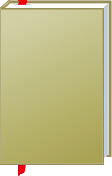

 |

|

The average rating for Chemistry: An Introduction to Organic, Inorganic and Physical: WITH Essential Mathematics fo... based on 2 reviews is 4 stars.
Review # 1 was written on 2017-12-02 00:00:00 Bosanadeljazero Butts Bosanadeljazero Butts"We do not dwell in the Palace of Truth. But, as was mentioned to me not long since, "There is a time coming when all things shall be found out." I am not so sanguine myself, believing that the well in which Truth is said to reside is really a bottomless pit." ~ Oliver Heaviside This textbook is one of the more creative textbooks I've run across, where it draws circuits and ask questions mostly from a pedagogical point of view. It's trying to teach undergraduates how to solve circuits. The problem with their approach is that it allows engineering to get in the way of that approach. It isn't that it's not only less rigorous but it is littered with errors by approximation. I mean there are many sections where it uses 22/7 as a "good approximation" of pi. I guess I'll go over a quick overview of the subject. When doing circuits analysis you're making the assumption that propagation of electricity happens instantaneously, another way of saying this is that you're assuming the speed of light is infinity. This leads you to making the assumption that there is no charge accumulation on any nodes. If you make these two assumptions then you can start to build networks which have rules that govern them called KVL and KCL, with a trivial result from graph theory that states the "number of branches" = "number of meshes" + "number of nodes" - 1. The most important subject covered in the book is the transfer function, where given some input and an output's impulse response you can calculate any output. Any response is some combination of the natural response and forced response, essentially an algebraic relationship, column space and null space. The book delves into this theory somewhat. In some ways it thinks quite deeply about these things, even for a book meant to be introductory for undergraduates. In other ways it does not scratch the surface. The book excels when it's playing a game with theory. Analysis is one thing, you need it to begin to understand how to do synthesis but when the book goes into unpacking the theory. |
Review # 2 was written on 2011-03-05 00:00:00 Jennifer Combs Jennifer CombsSure it was a class textbook but I still look at it from time to time. My first semester with it I utterly hated it!! But after the 2nd semester of circuits I found that I liked it. I am not really sure if it is a good textbook or if perhaps I am suffering from something analogous to Stockholm syndrome. At this point I can pretty much find the section I am looking for with my eyes closed. |
CAN'T FIND WHAT YOU'RE LOOKING FOR? CLICK HERE!!!